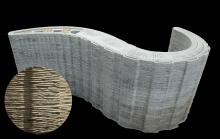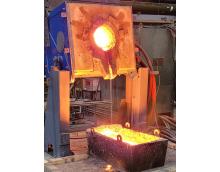
RSSDevelopment work has started on a hand-held mineral analyser for mining applications, said to be the first of its kind.
Dr Graeme Hansford from the University of Leicester’s Space Research Centre (SRC) in County Leicestershire, central England, has recently started a collaborative project with
It will allow rapid mineral identification and quantification in the field through a combination of X-ray diffraction (XRD) and X-ray fluorescence (XRF). The novel X-ray diffraction method was invented at the University of Leicester and has been developed at the Space Research Centre. The addition of XRD capability represents an evolution of current handheld XRF instruments which sell thousands of units each year globally.
The handheld instrument is expected to weigh just 1.5kg; will be capable of analysing mining samples for mineral content within 1–2 minutes, and requires no sample preparation.
This would be a world first, says the university. The analyser is different due to the insensitivity of the technique to the shape of the sample, which enables the direct analysis of samples without any form of preparation, something currently inconceivable using conventional XRD equipment.
“It’s very fulfilling for me to see the development of this novel XRD technique from initial conception through theoretical calculations and modelling to experimental demonstration,” says Dr Hansford.
“The next step is to develop the commercial potential and I’m very excited to be working with Bruker Elemental on the development of a hand-held instrument.”
Bruker Elemental is among the global leaders in hand-held XRF instrumentation, with the mining sector a key customer.
Bruker brings essential commercial expertise to the project, and the two partners have complementary expertise, and are well placed to successfully deliver this knowledge exchange project.
“Bruker is excited to be involved in this project as it will bring new measurement capabilities to our hand-held equipment. In many cases this system will provide information on the crystallography of the sample in addition to the elemental analysis,” says Alexander Seyfarth, senior product manager at Bruker Elemental.
Dr Hansford originally conceived the XRD technique in early 2010 when trying to work out how to apply XRD for space applications, for example on the surface of Mars or an asteroid, without the need for any sample preparation.
The next stage of the project will focus on developing and testing the methodology using samples which are representative of real-world problems encountered in mining, such as determining the relative amounts of iron oxide minerals in ore samples. In the second part of the project, a prototype hand-held device will be developed at the SRC in conjunction with Bruker to demonstrate efficacy of the technology in the field.
A key advantage is that the hardware requirements of the technique are very similar to existing hand-held XRF devices, facilitating both rapid development and customer acceptance.
The project is supported with an award from the Science and Technology Facilities Council’s Innovations Partnerships Scheme.









